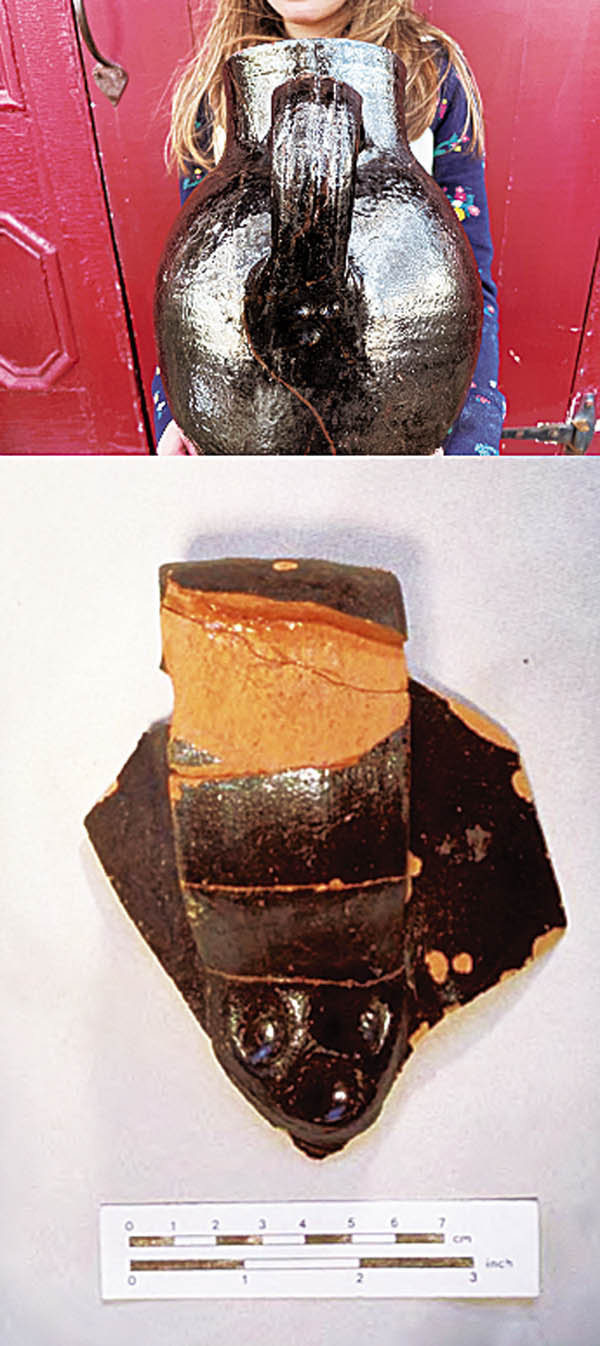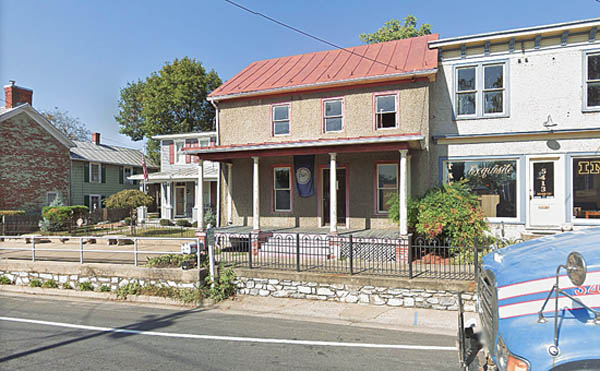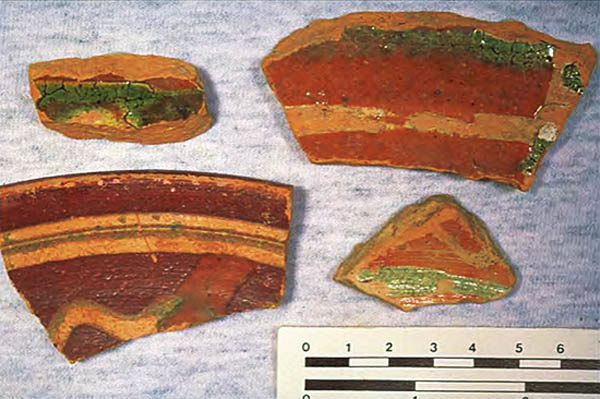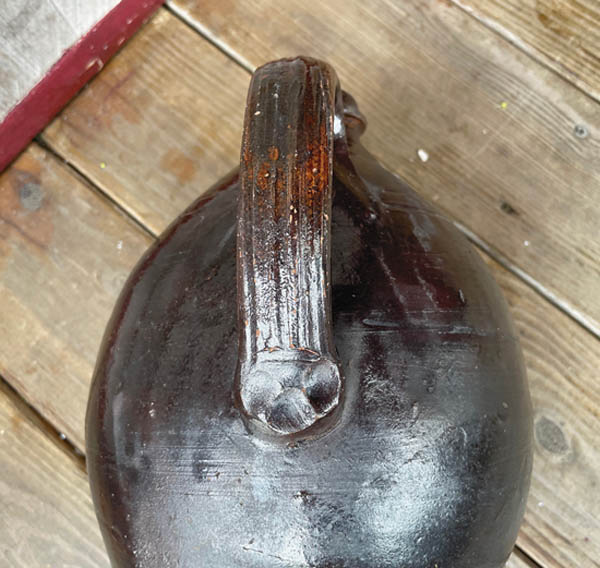The Story Of Andrew Pitman
A Revolutionary War Veteran Turned Potter In The Shenandoah Valley Of Virginia
By Justin W. Thomas - July 02, 2021
Founded in 1758, and located just eight miles south of Winchester, Va., Stephens City is one of six towns established in the Shenandoah Valley before the American Revolution. The settlement quickly emerged as an important crossroad town located at the north-south junction of the Great Road, a primary route for the early settlement of the Southern United States, particularly the backcountry, which began at the port of Philadelphia. Records indicate that utilitarian red earthenware production began in the Shenandoah Valley as early as 1745-50, although a notable potter was employed in Stephens City following the Revolutionary War. Andrew Pitman (1760-1838) was born in 1760, the son of an immigrant from the Rhineland in Germany, who may have also been a potter himself. Antonius (Anthony) Pitman (1736-1803) was born in Framersheim, Germany, on April 12, 1736, migrating to Frederick County, Va., sometime before the birth of Andrew in 1760, finding employment in his new home as a mason. Andrew enlisted in the Virginia Militia from 1777 to 1781 and was at the Battle of Yorktown when British General Lord Charles Cornwallis (1738-1805) surrendered to George Washington on Oct. 19, 1781, marking the conclusion of the last major battle in the American Revolution and the start of the new nations independence. Upon returning home to Stephens City, Andrew got married and established himself as a potter, although it is possible that he had previously apprenticed before the war. According to the Historical Marker Database, he purchased a parcel of land in Stephens City on Aug. 17, 1782, and started a pottery business on this site, eventually supporting three generations of red earthenware potters and being home to the Pitmans for 112 years. It is thought that Antonius also probably played some role in his sons business, perhaps even helping build the kiln. However, he may have also apprenticed to an early Shenandoah Valley potter, as well. Archaeology of the Site of the Pitman Pottery An excellent archaeology report exists today, titled, Life of a Potter, Andrew Pitman, where the William and Mary Center of Archaeological Research in Williamsburg, Va., conducted a thorough analysis of the artifact assemblage recovered by the James River Institute for Archaeology and the Northern Shenandoah Chapter of the Archaeological Society of Virginia in 1996. The study analyzes Pitmans late 18th- and early 19th-century production at his house located within the Newtown-Stephensburg Historic District at 5415 Main St., nearly 80 miles west of Washington, D.C., and about 100 miles west of Baltimore. Among the notable recovered artifacts are various slip decorated bowls and dishes utilizing multiple colors of slip, some of which are comparable to wares manufactured in Hagerstown, Md., and Pennsylvania, as well as a mold of a figure, cups, jugs, chamber pots, and crocks, among other forms, and possibly even pipes. According to the archaeology report, Unfortunately, the extant documentary evidence of Pitmans career as an important and prolific Shenandoah Valley potter is slight. The earliest known reference to Pitmans trade is a record of his purchase of red lead from Winchester drug store owner, John Miller in 1805. Trade was later conducted with Millers brother Godfrey Miller II, who was also a druggist in Winchester and probably sold Pitmans red earthenware, as well as other household goods. Miller was the son of Godfrey Miller (1730-1803), born in Gruena, Germany, on May 6, 1730. By age 19, the elder Miller was a member of the stocking weavers guild and, after spending some time in Switzerland and France, joined a company of framework knitters with two brothers in London. He eventually arrived in Philadelphia on Nov. 1, 1763, settling in Winchester with his wife in 1766. Miller continued in the weaving business, and by 1788 was also listed as owning an apothecary shop on North Loudoun Street. The younger Miller worked in his fathers shop, learning to weave, and later taking ownership of the business upon his fathers death in 1803. Interestingly, a large red earthenware pitcher of significant interest was recently discovered in central Pennsylvania, attributed to Andrew Pitman. This pitcher is possibly a rare 18th century survivor, and the large form is similar to other pitchers manufactured in places like southeastern Pennsylvania and Philadelphia in the 1700s. It is difficult to accurately photograph, but this pitcher is decorated in a dark green glaze, even though in some lighting it appears black. Among the characteristics found on this piece related to what was recovered at the site of the Pitman Pottery is the presence of three finger impressions on the handle terminal, which correspond with archaeological evidence. Another object of particular interest is a large red earthenware jug that was discovered some years ago in Arkansas. It is manufactured with a very similar handle and three finger impressions on the terminal, as is the pitcher attributed to Pitman. But this piece is thought to have possibly been produced by Peter Lauck (1754-1839) in Winchester, also in the late 1700s. Both Lauck and Pitman share similar histories, and there may even be an undocumented connection between the two men. According to Gene Comstocks book, The Pottery of the Shenandoah Valley Region, Peter Lauck was born in 1754 and moved to Winchester from the Lancaster area of Pennsylvania. He fought in the American Revolution, beginning with the march to Boston from Winchester with Revolutionary War hero Daniel Morgan (1736-1802) in 1775. Lauck was a prosperous and well-respected Winchester citizen, although his trade is only identified once in records. In 1779, he took James Jeffs as an apprentice to learn to read write and cipher the trade of the Potter. Historical Significance The red earthenware and stoneware manufactured in the Shenandoah Valley in the 19th century is some of the most coveted pottery produced anywhere in America; however, this areas earlier potters and their wares are as equally significant, and in some cases, even own a more important history. The names like Lauck and Pitman are preserved in history books today because of their roles in the American Revolution, but their careers as potters are just as significant, seeing that they are some of the earliest potters employed in the Shenandoah Valley in Virginia. And perhaps because of these early potters, the wares manufactured in Virginias Shenandoah Valley progressed to the celebrated industry that emerged in the 1800s, which is represented in major art museums all over the country today. Sources Comstock, H.E. The Pottery of the Shenandoah Valley. Winston-Salem, N.C.: Museum of Early Southern Decorative Arts, 1994. Godfrey Miller Family Papers, Stewart Bell Jr. Archives Room, Winchester-Frederick County Historical Society. Park, Sunyoon, Gregory J. Brown, Matthew Laird and Beverly Straube. The Life of a Potter, Andrew Pitman: Archaeological Evaluation of the Andrew Pitman Site (44FK528), Stephens City, Va. William and Mary Center for Archaeological Research, 2001.








SHARE
PRINT